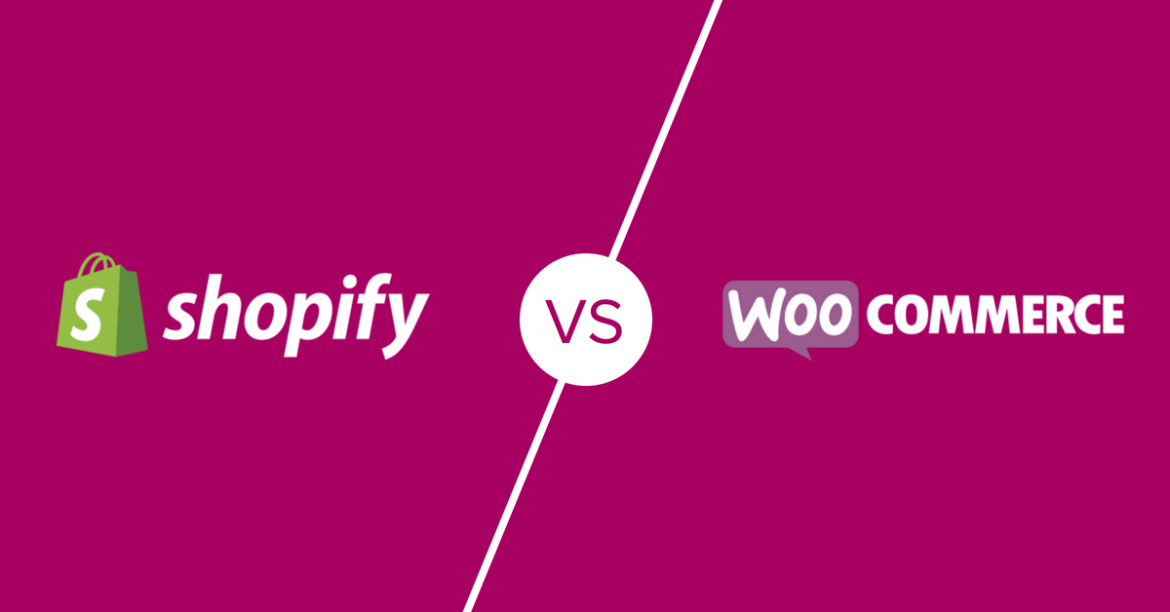Even as ecommerce is set to rise from its humble ‘storefront’ beginnings to massive, omnichannel retail interactions fuelled by AI, the era of individual, small-scale and ‘solopreneur’ online selling is far from over.
As of 2017, Statista reports:
- In 2017, an estimated 1.66 billion people worldwide purchased goods online
- During the same year, global e-retail sales amounted to 2.3 trillion U.S. dollars
- Projections show a global growth of up to 4.48 trillion U.S. dollars by 2021
- In the Asia Pacific region, e-retail sales accounted for 12.1 percent of retail sales in 2016
Ecommerce has introduced a whole new segment of customers into the market. In other words, we’re seeing more than just a shift from physical to digital storefronts. We’re actually seeing an explosion of would-be buyers themselves becoming sellers.

Part of this is the plethora of ecommerce platforms available. Besides the proverbial e-Bay and Amazon, there are ‘self-setup’, ‘DIY’ platforms like WooCommerce, Shopify and even the craft-centric ‘Etsy’. Each platform has its own benefits, target audiences and features to support both buyers and sellers.

So far, it’s clear that WooCommerce has conquered 23.06% of the market share while Shopify sits at around 9%. This doesn’t necessarily mean that one is better than the other since they each have their unique strengths.
Rather, the disparity in numbers has a lot to with the way these platforms operate.

So, how do you know which platform is right for you?
Shopify, in short
Shopify, at its core, is a platform that allows you to sign up and register, build and create an online store on Shopify’s own platform. This then allows you, the seller, to perform and manage the most important functions of selling — accepting payments, managing inventory, shipping, communicating with buyers — from one platform without ever touching the backend or worrying about things like website hosting. It’s what is known as an ‘out-of-the-box’ solution.
You can understand why. Shopify’s powerful themes and templates allow you to skip the intricacies of technical set up and management. It is essentially ‘Shopify-hosted’.
Wooed by WooCommerce?
WooCommerce is WordPress-specific. Instead of a platform, it’s an open-source plugin that allows you to transform your pre-existing WordPress site into a one-stop selling machine. Combining the CMS powers of WordPress along with a selling arm has obvious benefits to it. And, because the plugin is ‘open-source’, almost every aspect of it is customizable to your unique selling needs.
This is the essential differentiator between the two options and your decision will likewise end up being based on how quickly you want to set up and how much ‘tailoring’ your business product or selling idea really requires on the backend.
WooCommerce is self-hosted.
Setup
Shopify
Right off the bat, Shopify positions itself as the option for those who want to skip the hassle by promising a very key benefit:

The ‘your brand, your way’ promise, along with the idea of ‘instant’ access and ‘no design skills needed’ tell you, the user, that there’s no hassle to set up.
To ‘set up’ a Shopify store, you only need to:
- Create a Shopify account
- Purchase a domain name (or sync one you already have bought in the past)
- Choose your theme from Shopify’s theme store of free and premium templates
That’s it.
Once you’re in, you can set up all the product specs with as much granular control as you’d like. The platform is built to streamline many of your decisions — such as product descriptions and images — presenting them in a user-friendly way.

What’s even better is that sellers who use Shopify can get started right away. Shopify has its own payment gateway, which is powered by Stripe. It also enables multiple payment options, making it easy for sellers to provide a ‘customer-centric’ service.
WooCommerce
Think of WooCommerce, the plugin, as a comprehensive, robust and absolutely chocked-full-to-the-brim extender for WordPress that is specifically intended for the e-commerce zone.
To get started, you’ll have to either sign in with your existing WordPress account or create a new one.

After this point, you’ll need to do two very involved things to set up WooCommerce. At a glance, these are simple. But in and of themselves, they constitute a deeper learning curve, especially if you’re a WordPress beginner.
- Install WordPress (which involves choosing a self-hosting package, signing up, syncing domain names, installing and configuring a theme)
- Install and configure the WooCommerce interface (which also involves learning its myriad controls)

However, choosing WooCommerce does have a major advantage. It gives you access to the 50,000+ other plugins that currently extend the WordPress platform. This, coupled with WooCommerce’s own granular control over the smallest aspects of store design and function gives each WordPress-WooCommerce powered store the potential to be completely unique.
Design & Customization
Shopify
Shopify’s collection of over 100 free and ‘premium’ (i.e., ‘paid’) themes is at the very heart of its ease-of-use and beautiful design. It’s why so many online store owners end up going for Shopify if they don’t already have a WordPress site they’d like to extend into e-commerce.
The sheer visual beauty of Shopify’s themes is enough to convert nascent sellers and small business owners.

However, there’s a caveat to Shopify’s themes. Their dedicated, design-based natures and their ‘out-of-the-box’ easy setup means that modifications will require users to know Shopify’s own coding language, Liquid, in order to make theme-level modifications and customizations.
This either means learning the coding language yourself (which is a breeze if you already understand basic coding conventions — but, if you’re choosing Shopify for its easy use and setup then this defeats the purpose, doesn’t it?); or else, it entails hiring out the customisations to a Shopify theme specialist.
WooCommerce
WooCommerce, on the other hand, has based its entire premise and value proposition on the fact that it is fully customizable. In fact, it calls for customization at every level, from the design and theme to tax, payments, shipping options, product variations and more.
However, WooCommerce is not going to leave you high and dry. To remain flexible and appeal to sellers with a range of expertise levels yet still maintain their competitive edge, the plugin starts you off with its owner version of an ‘out-of-the-box’ solution known as ‘Storefront’.

If you know anything about WordPress themes at all, you’ll know that certain big-name ‘frameworks’ like Genesis have their main theme functionality and then offer developers and users the chance to use, modify and install ‘child themes’ that run off this framework.

Storefront works in a similar manner. It gives users a basic framework to use that presents a pretty standard ‘storefront’ look. To customize this design, sellers can use ‘child themes’. And, to further the theme’s functionality, they can rely on extensions

What is also interesting is that WooCommerce has attempted to build a community around its ‘Storefront’ theme, using customizations and user-generated ideas to build a dedicated following, rather like Shopify has been doing so far.

Cost
Shopify
Officially, Shopify has five different packages and, therefore, five separate price points. The ‘main’ three choices of the five solutions are understood to be connected to each other in terms of stages of growth.

This means that one could start at ‘Basic Shopify’ and move to ‘Shopify’, eventually arriving at ‘Advanced Shopify’. However, the difference between each plan is simply the number of features present. For a higher price point, there are more features. Hypothetically, if you had the cash to spare and wanted to start right away with all the features, you could simply jump to Advanced Shopify.
The two remaining options are not part of this ‘tiered’ pricing format. Instead, the two options position themselves as unique solutions for the format of the business. One is intended for operations-‘heavy’, the other for operations-‘lean’.

The ‘Lite’ model has specific functionality built in. It’s not about the features of the first three options but, rather, the business model the online seller wants to operate on. In this case, the ‘Lite’ model focuses on harnessing Facebook.

The second option, intended for enterprises, similarly has its own workflow and calls for a more in-depth meeting with a specialist. Large enterprises require their own tailored solutions and Shopify has kept that in mind.

Keep in mind one more thing. These prices are only to use the Shopify platform and its slew of features. Templates/themes are separately priced and purchased. So, if you’re opting for a ‘paid’ or ‘premium’ theme, expect this to range from $120 to $140.
WooCommerce
The price point for WooCommerce varies quite a bit. Like the way it functions, the price is just as customizable. While the plugin itself — and, by extension, the ‘main’ theme of ‘Storefront’ doesn’t cost anything — child themes and extensions do.

This means that if you plan to extend the features, look and feel of the shopping experience for your customers, you’ll have pay for that.

Keep in mind, as well, the cost of hosting and domain name upkeep factors in this cost too. Here, it really depends on your host, hosting package and deal that you received when you first signed up.

Integrations
Shopify
For all your integration needs, Shopify has its App Store. Sort of like the Mac or iPhone App Store, the integrations that you can find in Shopify’s App store help, not only to extend the use of your e-commerce platform but also to hook into several other platforms you may be using simultaneously.
There are integrations or ‘apps’ for every aspect of selling. These are software- and platform-specific. You can also further use Zapier to create custom ‘recipes’ or ‘workflows’ that connect two or more platforms together.

WooCommerce
Because WooCommerce is a plugin, rather than a platform, and runs on WordPress, it’s already powerfully charged to be fully compliant with the thousands of other plugins that you can use with WordPress.
Since WooCommerce is ‘open-source’, the potential to develop and distribute even more useful, compatible plugins in the future is high. In other words, you don’t need to wait for the creators of WordPress or WooCommerce to release plugins, the way you might with Shopify.
Now, besides this, we’ve also seen how ‘extensions’, whether paid or free, further enhance the functionality of a user’s store.
And, finally, WooCommerce, like Shopify, is able to be integrated with specific sales, marketing, and lead generation software through its powerful API. In this regard, it runs exactly like Shopify.
However, as you can see, there are more ‘options’ for extending the use of WooCommerce than there are Shopify, which makes sense since granular control and customisability is WooCommerce’s clear strength.
Point of Sale
Shopify
The goal of Shopify, as a platform, is to become a fully-integrated, end-to-end system for online sellers. Therefore, their POS system offerings demonstrate this kind of commitment.

Their brand’s positioning is as a full-service e-commerce platform so the Shopify team has gone through great lengths to imagine every business’s size and needs, from both an operational standpoint as well as a functional one.

POS System features have their own pricing plans and integrate well with online selling pricing plans. They’re essentially set up in the same way.

Since POS systems call for hardware, Shopify online retailers expanding to brick-and-mortar establish their hardware systems. Just like the online pricing plans, there are two formats or sizes for selling. Based on a business’s needs, Shopify offers more ‘lean’ or ‘heavy’ hardware.

Occasional selling (for pop-ups or events)

Retail stores (for consistent, daily sales)

WooCommerce
Not surprisingly, WooCommerce approaches the question of POS systems much in the same way that it approaches everything else: Offered as an extension. Again, because WooCommerce is a plugin, it relies on a combination of other plugins, extensions as well as integrations to provide a full system that can be customized for point of sale.

However, this also means that you’ll have to install (and purchase) each aspect on its own. It will be up to you to articulate what your sales process is and define at which point a sale occurs, what happens next internally (i.e. invoices and receipts) as well as externally (i.e. client-facing promotions, emails and discounts).
In terms of hardware, that, too, is up to you to procure.
So, which platform is right for you?
This depends entirely on your specific needs, your business’s goals and future plans of scalability. What do you see for your business now as well as two years from now?
To try and make the best choice possible, we recommend taking stock and reviewing your business’s needs from these five aspects. Then, make a list and give a check to each of the sub-topics for each of the areas of comparison we’ve outlined here.
You’ll quickly get a sense of which platform will be able to provide the perfect blend of robust start-up and long-term growth.
As always, we are here to help guide you in your decision. Contact us today to learn more about running your first ecommerce website.



